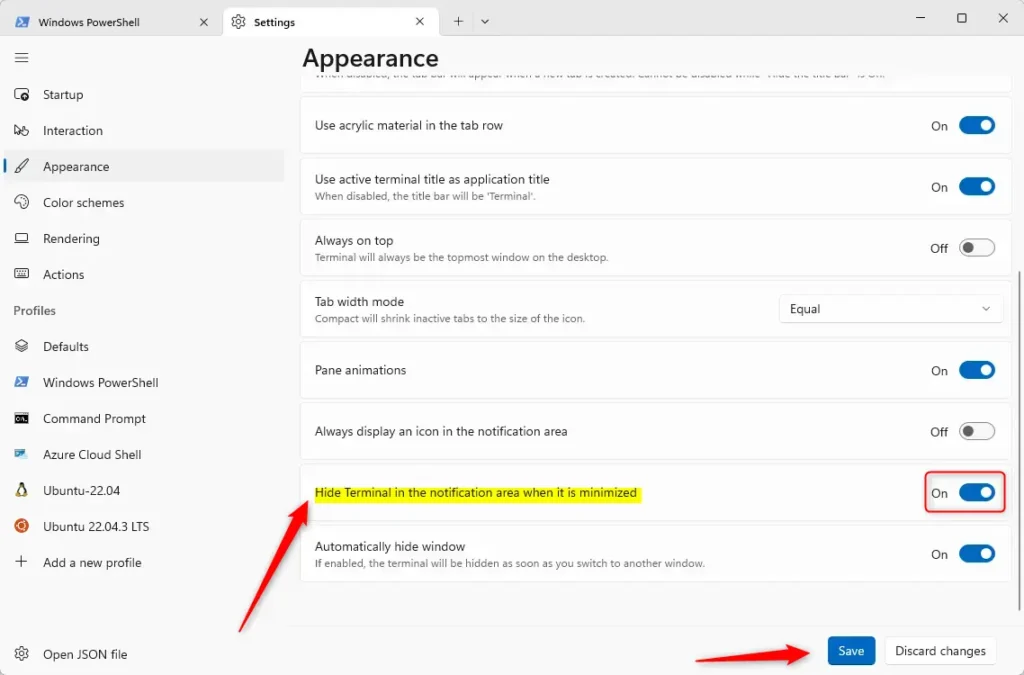This article explains hiding the Terminal icon in the notification area when minimized in Windows 11.
Windows Terminal is a modern host application for the command-line shells, including Command Prompt, Windows PowerShell, and bash (via Windows Subsystem for Linux (WSL)).
The Terminal app in Windows allows many customizations. You can change the language, adjust the launch size, set the default profile, change the startup behavior, open the admin window, open Terminal automatically at startup, add copy selection to the clipboard automatically, automatically hide the Terminal window, and more.
The Terminal app also has a feature that automatically hides the window in the notification area when minimized. This is disabled by default. However, you can turn it on anytime.
Enabling the “hide Terminal window when minimized” feature in the notification area can help reduce clutter on your taskbar and keep the Terminal app running in the background. This can be helpful if you frequently use the Terminal app and want to keep it open but out of the way.
On the other hand, disabling this feature can make it easier to access the Terminal window when you need it since it will always be visible on your taskbar. It ultimately depends on your preferences and your use of the Terminal app.
Hide Terminal in the notification area when it is minimized
As mentioned, you can hide the Terminal in the notification area when it is minimized.
Here’s how to do it.
First, open the Windows Terminal app.
You can do that by clicking on the Start menu and searching for Terminal. Then, under “Best match,” select and open the Windows Terminal app.

When the Terminal app opens, click the down arrow button on the top bar and select Settings (Ctrl +,).

On the Settings window, click on the Appearance tab on the left. Then, select the “Hide Terminal in the notification area when it is minimized” tile and toggle the switch button to the On position to enable it.
To disable it, toggle the switch button to the Off position.

Click the Save button at the bottom to save your changes, then exit.
That should do it!
Conclusion:
- Enabling the “Hide Terminal in the notification area when it is minimized” feature can help reduce taskbar clutter and keep the Terminal app running in the background.
- Disabling this feature makes it easier to access the Terminal window when needed, as it will remain visible on the taskbar.
- You now have the knowledge and steps to enable or disable this feature according to your preferences and usage of the Terminal app.

Leave a Reply